| |
| |
Photographer,
Location |
Images |
Comments |
|
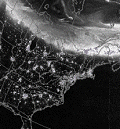
|
Paul McCrone,
Satellite Imagery was processed at Air Force Weather Agency, Offutt AFB Nebraska
Dec. 15, 2006 |
#1,
#2, #3,
|
The DMSP satellite has the ability to detect auroral light at night. These images are mosaics of various DMSP overflights of the aurorae observed from 12-15 Dec 2006. The 14-15 Dec image is quite striking.
|
|
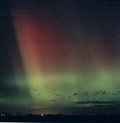
|
Alan Atwood,
Cedar Rapids, Iowa
Dec. 14, 2006 |
#1 |
What a lightshow!
I waited until around 7PM local time and then found a nice
secluded spot west of town. Just really neat to see the
reds and the purples right before your eyes.
Photo
details: Nikon
N75 Film SLR Nikkor 28-80mm Zoom Lens Fuji Superia Xtra
400 Color Film F6.7@20-30 secs.
|
|
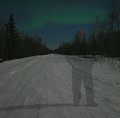
|
Steven Rast,
Clear, Alaska
Dec. 6, 2006 |
#1,
#2 |
Walked into
shot for 10 seconds to create ghostly image with light aurora
in the background.
Photo
details: Canon
EOS Rebel XT, 30s, f4.5, 100 ISO
|
|
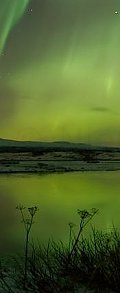
|
Niels Giroud,
Thingvellir, Iceland
Dec. 14, 2006 |
#1,
#2, #3,
#4, more |
Incredible show
above the historical site of Thingvellir and the lake Thingvallavatn,
western Iceland.
Photo
details: Nikon
D200, 24 mm, 800 iso, 10-30 s exposure, f/4.
|
|

|
Jonas
Forste,
Jakobstad, Finland
Dec. 15, 2006 |
#1,
more |
Around 4 AM
the weather finally was clear and the northern lights were
kicking into high gear, probably the best show I have seen
in 10 years. At some times I had trouble figuring out where
to point the camera for the next shot since it looked like
in the photo almost everywhere you looked.
Photo
Details: Nikon
D50 iso 1600 8 sec exposure 18mm f3.5
|
|
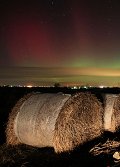
|
Mike Hardiman,
Logan County, Illinois, USA
Dec. 14, 2006 |
#1,
#2, #3,
#4, more |
These photos were all taken between 1800-1930 CST (0000-0130z). Fairly low-key event staying close to the horizon... but some minor substorming was noted with a few rays. Clouds moved in from 8pm til midnight... may have missed the peak.
|
|
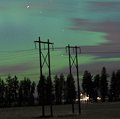
|
Brian Nam,
Spokane Valley, Washington
Dec. 15, 2006 |
#1,
#2, #3 |
It was very
cloudy here and then at around local midnight high winds
kicked up and cleared the sky up just enough in time to
catch the auroras for about 90 minutes. To the naked eye
the glow was a faint green glow and showed very little motion
and detail but the camera revealed some nice photographic
auroras. The auroras were losing intensity by the time the
sky cleared but it was nice to see the auroras again after
such a long absence!
Photo
details: Canon
30D, 10s-30s exposure time, 800-1250 ASA
|
|
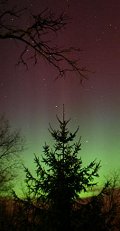
|
Al Degutis,
Woodstock, Illinois
Dec. 14, 2006 |
#1,
more |
Photo
details: Canon
300D at ISO 800, 30sec exposures.
|
|
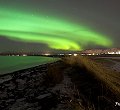
|
Fredrik Holm,
Reykjavik, Iceland
Dec. 13, 2006 |
#1,
#2, #3,
more |
At first the
auroras were faint and I passed time trying to capture some
Geminid meteors. The auroras then picked up and formed a
nearly fixed but intense green arch, which after ca 30min
started parting into several arches and a somewhat more
intricate pattern. The auroras were slow moving, but on
a few occasions grew more intense and started flickering.
I noted approximately 40 Gemenids, one of which can be seen
in the photos.
Photo
details: Canon
EOS 30D, EF-S 10-22 F3.5-4.5, ISO 400, f.3.5, 30-50s
exposures.
|
more
images:
from Duane Clausen
of Menominee, Michigan; from
Tim Hack of Rochester, New York; from
Mike Hobden of Aberdeen, Scotland; from
Tib Marcus of Fort Nelson, British Columbia, Canada.
|
|